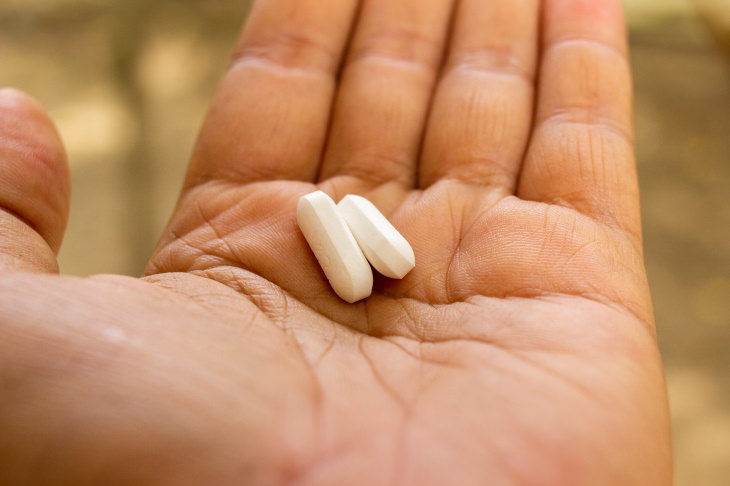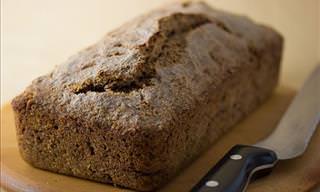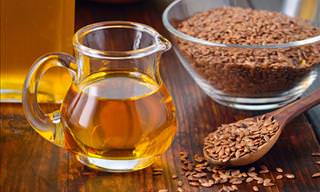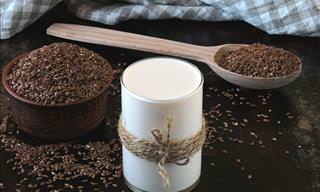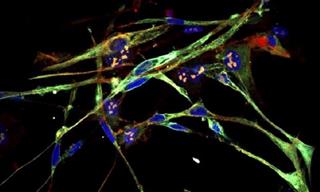What is Lactose Intolerance?

Lactose intolerance and milk allergy - many use these terms interchangeably although they refer to different conditions. So let’s begin by differentiating between these diagnoses.
Lactose intolerance is not an allergy. Instead, it’s a digestive condition where the body is unable to effectively break down a type of sugar called lactose. Naturally found in dairy products, lactose is a disaccharide, or a molecule consisting of two sugars - glucose and galactose. Disaccharides cannot be readily absorbed by the body and must be broken down into their basic components. When the body is lacking lactase, the enzyme that dissolves lactose, consuming dairy irritates the GI tract and triggers unpleasant symptoms.
Lactose intolerance should be distinguished from a milk allergy, which is an immune condition that can result in a life-threatening allergic reaction. Milk allergies are typically triggered by the proteins in dairy. Compared to lactose intolerance which typically develops later in life, milk allergy is a lifelong condition.
Causes and Symptoms of Lactose Intolerance

One can develop this condition for a variety of reasons. The most common cause lies in one’s genetics. Although most infants can digest lactose, the genes responsible for making lactase can “turn off” with age. This is why lactose intolerance is more likely to be diagnosed in adulthood - the older we get, the less lactase the body produces.
This type of lactose intolerance is called primary lactase deficiency, or lactase non-persistence, and it disproportionately affects certain ethnic groups. Scientists believe that the ability to digest lactose is a genetic mutation acquired by some groups of humans in response to dairy farming. In the US, Asian Americans, Hispanics, African Americans, and Native Americans are all more likely to suffer from lactose intolerance.
Another cause of lactose intolerance is an injury to the small intestine. GI infections, celiac disease, and Crohn’s disease damage the intestines and diminish the ability to break down lactose.
So what happens when undigested lactose ends up in the small intestine? Fluid and gas start to build up, producing many uncomfortable symptoms, namely:
- Bloating and flatulence
- Abdominal pain
- Nausea and vomiting
- Diarrhea and watery stools
Which Foods Trigger Lactose Intolerance?

Many people don’t realize that they are lactose intolerant because this condition varies in a case-by-case scenario. Some people can safely consume certain dairy products. For others, the dose makes the poison, and they can tolerate a moderate amount of any dairy. Generally speaking, milk products with higher sugar content, such as milk, heavy cream, ice cream, cream cheese, cottage cheese, and soft cheeses like mozzarella are more likely to trigger symptoms.
Fermented dairy products, on the other hand, such as yogurt, butter, and hard cheeses have lower amounts of lactose and some even contain bacteria that break down lactose, so they may be better tolerated.
In addition, please remember that lactose isn’t only present in dairy. It’s also a common additive in packaged foods, instant soup, salad dressings, pancake mix, chocolate, desserts, baked goods, and infant formula. If you notice that a specific food hurts your stomach, check the ingredients list for names like whey, curds, lactose, milk, cheese, cream, and butter.
If you’re interested in the topic of specific foods linked to lactose intolerance, we have two great nutritional guides for you here:
How Lactose Intolerance is Diagnosed
If you notice unpleasant symptoms after eating milk and dairy, you may have lactose intolerance. Your doctor may help you diagnose lactose intolerance and rule out other, more serious conditions, like Irritable Bowel Syndrome (IBS), celiac disease, or Small Intestinal Bacterial Overgrowth (SIBO).

During the doctor’s visit, your physician will ask about your symptoms, examine your medical history, inquire about eating habits, and finally conduct a physical exam. A few weeks prior to the doctor’s visit, it would be great to keep track of the food you eat, especially dairy, and how it affects your well-being. You may also want to try excluding dairy from your diet for a few days and write down if you notice an improvement in your symptoms.
Your doctor may also conduct one of the following tests to confirm the diagnosis:
- Hydrogen breath test - lactose intolerance creates higher levels of hydrogen in the breath. During this test, you’ll be asked to drink milk. After a few hours, you’ll need to breathe into a container a few times. Higher concentrations of hydrogen in your breath indicate that you have lactose intolerance.
- Lactose tolerance test - a blood test can also help diagnose lactose intolerance. During this test, you’ll be asked to drink milk. After 2 hours, you'll undergo a blood glucose test. If your glucose levels don't rise after consuming the milk, your body isn't properly breaking down and absorbing lactose.
- Stool acidity test - those who have trouble digesting lactose have higher levels of lactic acid and glucose in the stool. A stool acidity test can help diagnose the condition, although it is mostly used in infants and small children.
Treatments of Lactose Intolerance
Unfortunately, there is no cure for lactose intolerance. However, lactose intolerance is quite easy to manage with simple dietary changes and supplements. In fact, many lactose intolerance sufferers may not have to eliminate dairy completely.
1. Lactose elimination diet

Dietary adjustments are the first step to combatting lactose intolerance. Start by eating different dairy products one at a time and observing your symptoms. Begin with small amounts, and if you don’t see any response, add a little more. Once you know which products trigger your symptoms the most, it would be wise to eliminate them completely or replace them with something else. For example, milk is generally the strongest irritant, so replacing it with lactose-reduced milk or plant milk alternative alone may improve your symptoms.
Some people also find that mixing dairy with other foods - such as yogurt and granola or cheese and bread - makes these foods more tolerable.
If you’re eliminating dairy products from your diet, it’s also advised to be mindful of your calcium intake. Dairy contains a lot of calcium, but you can also get it from green leafy vegetables, squash, almonds, pumpkin seeds, onions, sardines, and asparagus. Avoid taking a calcium supplement without your doctor’s advice, as these can be harmful to the kidneys.
2. Lactase supplements
So what do you do if you’re really craving ice cream but can’t have any due to your lactose intolerance? You don’t have to suffer the consequences. There is a magic pill, and it’s called a lactase supplement. These are pills or drops that contain synthetic lactase enzymes. If you take them right before you consume dairy, they will help break down the lactose for you and either reduce or completely eliminate the unpleasant symptoms.
However, these supplements are not advised for children or pregnant and breastfeeding individuals, according to the National Institute of Diabetes and Digestive and Kidney Diseases. And there might be other restrictions too, so make sure to check with your doctor before you start taking these supplements.
3. Probiotic supplements

You’re surely familiar with probiotics. If not, we have a whole article on the subject available here, but here’s a brief explanation too. Probiotics are live microorganisms that, when consumed, work to improve our gut microbiome.
An increasing body of research suggests that consuming certain strains of probiotics found in fermented and non-fermented dairy can improve the symptoms of lactose intolerance. However, it’s not yet known if these probiotics work for everyone, so take this last suggestion with a grain of salt. Of course, we’ll keep you posted if any new developments emerge on that front.
All in all, lactose intolerance is certainly an unpleasant condition. It can mess with your day-to-day life, as eliminating dairy can get tricky, especially if you don’t cook or can’t prepare your own food at work, school, or when traveling. However, with a little trial and error, you will be able to find a diet that works for you and stop the uncomfortable gut symptoms once and for all.
H/T: Live Science, Cleveland Clinic, Everyday Health, Mayo Clinic
 Go to BabaMail
Go to BabaMail







